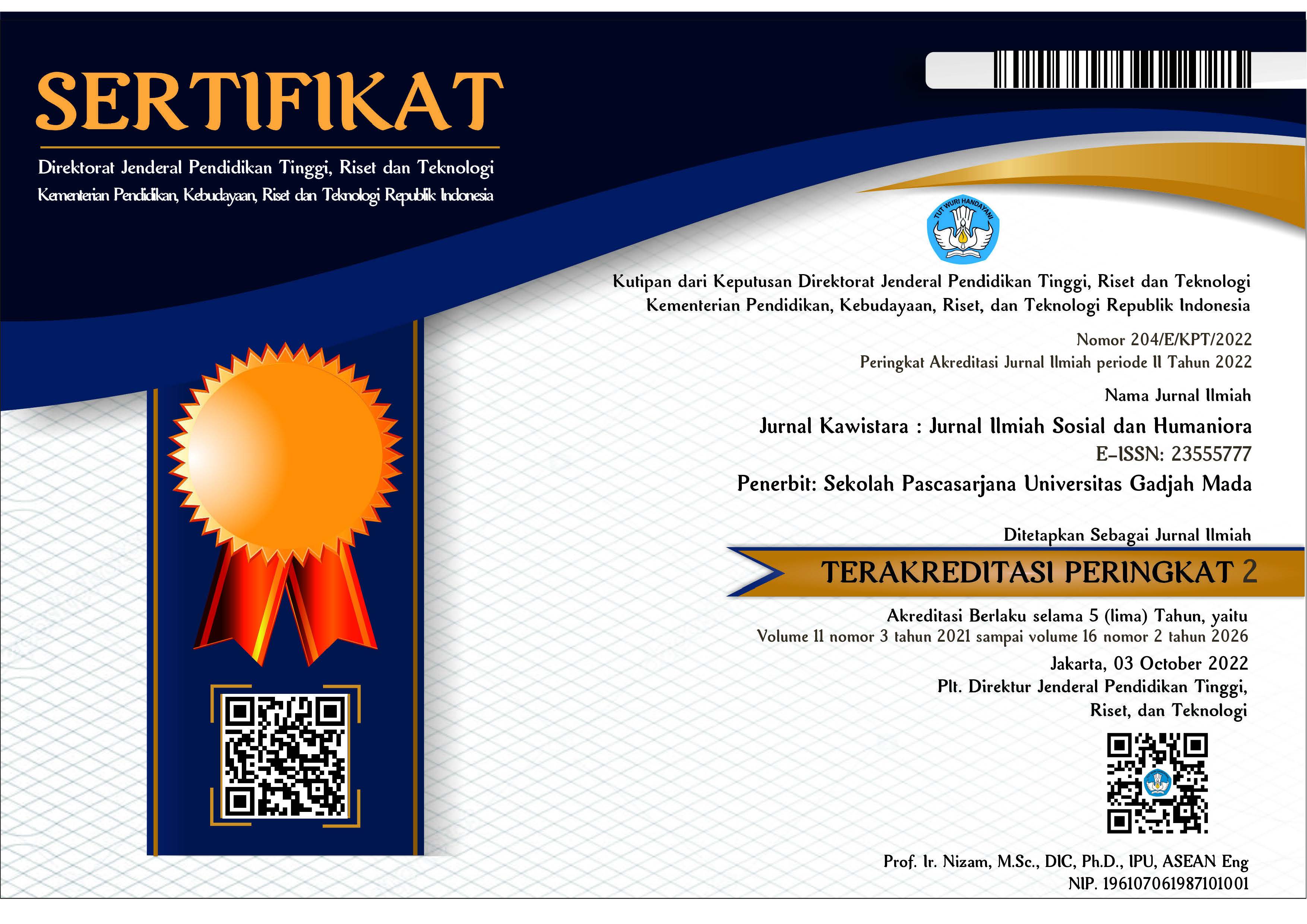MEMUTUS LOGIKA KARITATIF DALAM PRAKTIK PARIWISATA DI UBUD, BALI
I Made Kusuma Negara(1*), I Made Adikampana(2), Saptono Nugroho(3)
(1) Universitas Udayana
(2) Universitas Udayana
(3) Universitas Udayana
(*) Corresponding Author
Abstract
Many villas in Ubud is located around agricultural land owned by farmers who are members of Subak. There is a deal that the villas are required to provide material contributions to local institutions, including Subak. Such contributions produce caritative framework which not in line towards the sustainability of tourism development. This paper addresses to offer the guidelines of sustainable tourism practice in Ubud, Bali. To fulfill this purpose, data has been collected from observations and interviews with selected informants and then analyzed descriptively. The analysis indicated that there is dualism perspective against agriculture, which has implications towards exclusivity in-group, especially farmers and villas. Each group attempts to maintain the dualism perspective by applying various tactics, which can lead to disharmonies relations between groups. It requires social guidance in order to reduce caritative framework by creating common tourism sphere through agrotourism.
Keywords
Full Text:
PDFReferences
Andereck, K.L. dan G.P. Nyaupane. 2011. Exploring the Nature of Tourism and Quality of Life Perceptions among Residents. Journal of Travel Research 50(3): 248-260.
Fashri, F. 2014. Pierre Bourdieu; Menyingkap Kuasa Simbol. Cetakan Pertama. Jalasutra. Yogyakarta.
Hanifah, M. 2014. Ubud Masuk 10 Besar Destinasi Wisata Terfavorit di Asia. http://www.travel.okezone.com. diakses tanggal 16 April 2014.
Inskeep, E. 1991. Tourism Planning : an integrated and sustainable development approach. Van Nostrand Reinhold, New York.
Liu, Z. 2003. Sustainable Tourism Development: A Critique. Journal of Sustainable Tourism 11(6): 459-475.
Mahar, C., R. Harker, dan C. Wilkes 2005. Posisi Teoretis Dasar. Dalam An Introduction to the Work of Pierre Bourdiue: The Practice Theory. Editor R. Harker, C. Mahar, dan C. Wilkes. Macmillan. London. Terjemahan Pipit Maizier. 2005. (Habitus x Modal) + Ranah = Praktik : Pengantar Paling Kompeherensif kepada Pemikiran Pierre Bourdieu. Cetakan Pertama. Jalasutra. Yogyakarta.
Marques, H. 2006. Searching for complementarities between agriculture and tourism-the demarcated wine-producing regions of northern Portugal. Tourism Economics 12(1): 147–155.
Matarrita-Cascante, D., M.A. Brennan, dan A.E. Luloff. 2010. Community agency and sustainable tourism development: the case of La Fortuna, Costa Rica. Journal of Sustainable Tourism 18(6): 735-756.
Okazaki, E. 2008. A Community-Based Tourism Model: Its Conception and Use. Journal of Sustainable Tourism 16(5): 511- 529.
Poloma, M.M. 1979. Contemporary Sociological Theory. Macmillan. New York. Terjemahan Tim Penerjemah YASOGAMA. 2003. Sosiologi Kontemporer. Cetakan Kelima. PT RajaGrafindo Persada. Jakarta.
Simpson, M.C. 2009. An integrated approach to assess the impacts of tourism on community development and sustainable livelihoods. Community Development Journal 44(2): 186-208.
Timothy, D.J. 1999. Participatory Planning : A View of Tourism in Indonesia. Annals of Tourism Research 26(2): 371-391.
Timothy, D.J. dan C. Tosun. 2003. Appropriate Planning for Tourism in Destination Communities: Participation, Incremental Growth and Collaboration. Dalam Tourism in Destination Communities. Editor S. Singh, D.J. Timothy, dan R.K. Dowling. CABI Publishing. Wallingford.
Article Metrics
Refbacks
- There are currently no refbacks.
Copyright (c) 2018 I Made Kusuma Negara, I Made Adikampana, Saptono Nugroho

This work is licensed under a Creative Commons Attribution-ShareAlike 4.0 International License.
Jurnal Kawistara is published by the Graduate School, Universitas Gadjah Mada.











